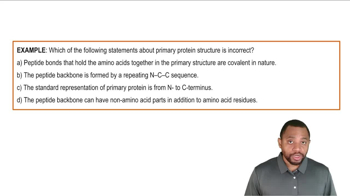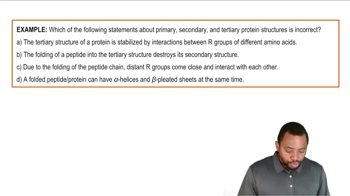Consider the amino acids histidine, phenylalanine, and serine in an enzyme. State which of these amino acids have R groups that would:
d. form salt bridges
 Verified step by step guidance
Verified step by step guidance Verified video answer for a similar problem:
Verified video answer for a similar problem:



 2:7m
2:7mMaster Tertiary Protein Structure Concept 1 with a bite sized video explanation from Jules
Start learning